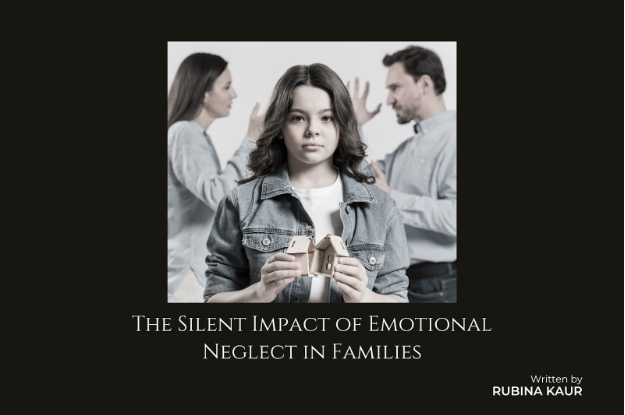








When we think about family neglect, our minds often jump to physical needs, food, shelter, and safety. But there's another kind of neglect, subtle yet deeply damaging: emotional neglect. Unlike visible wounds, the scars of emotional neglect often go unnoticed, hidden beneath silence, misunderstandings, and unspoken pain.
In families, emotional neglect occurs when a child's feelings are ignored, dismissed, or invalidated not out of cruelty, but often because parents themselves are unaware of the importance of emotional connection. The result? Adults who grow up feeling unseen, unworthy, and emotionally disconnected.
This blog dives deep into the silent impact of emotional neglect in families, how it shapes lives, and how we can break the cycle.
Emotional neglect is not about what was done, it's about what wasn't. It happens when caregivers consistently fail to respond to a child's emotional needs. Unlike abuse, which is active harm, neglect is the absence of emotional support, warmth, and validation.
Examples include:
Famous point: Dr. Jonice Webb, psychologist and author of Running on Empty, explains: "It's not something parents do to their children. It's something they fail to do for them."
The difficulty with emotional neglect is that it's often invisible. Children may have food on the table and clothes on their back, yet still grow up feeling emotionally empty.
Common effects include:
Research point: Studies in developmental psychology show that children who grow up without emotional validation have higher risks of anxiety, depression, and attachment issues later in life.
The impact of childhood neglect doesn't vanish with age; it follows into adulthood. Adults may not connect their struggles to childhood, yet the patterns remain.
Signs of emotional neglect in adulthood:
Famous example: Oprah Winfrey has openly spoken about her struggles with emotional neglect during her childhood and how it shaped her adult relationships until she began healing through therapy.
Often, parents who emotionally neglect their children are not cruel; they are repeating what they experienced. A father who was told to "man up" may not know how to comfort his crying son. A mother who grew up in silence may unknowingly teach the same silence.
The result? A cycle of neglect passed from one generation to the next. Breaking this cycle requires awareness, emotional education, and intentional healing.
The good news: emotional neglect can be healed. Recognizing it is the first step toward breaking free from the silence.
Steps to healing:
Famous point: The Gottman Institute emphasizes that emotional attunement responding to emotions with care is the foundation of strong, resilient families.
The silent impact of emotional neglect in families may not leave physical scars, but it leaves deep emotional wounds. It creates adults who struggle to feel seen, loved, and connected. Yet, awareness is the key to healing.
By learning to recognize emotional neglect, validating our own feelings, and breaking the cycle with compassion, we can build families where every member feels emotionally safe, heard, and loved.
Remember: Healing begins the moment we choose to listen to ourselves and to each other.
Whether you're looking to strengthen an already healthy relationship or address specific challenges, couples therapy can provide valuable tools for growth and connection. Contact us to learn more about our couples counseling and relationship therapy services.
If this article resonated with you, share it with others who might benefit from these insights.